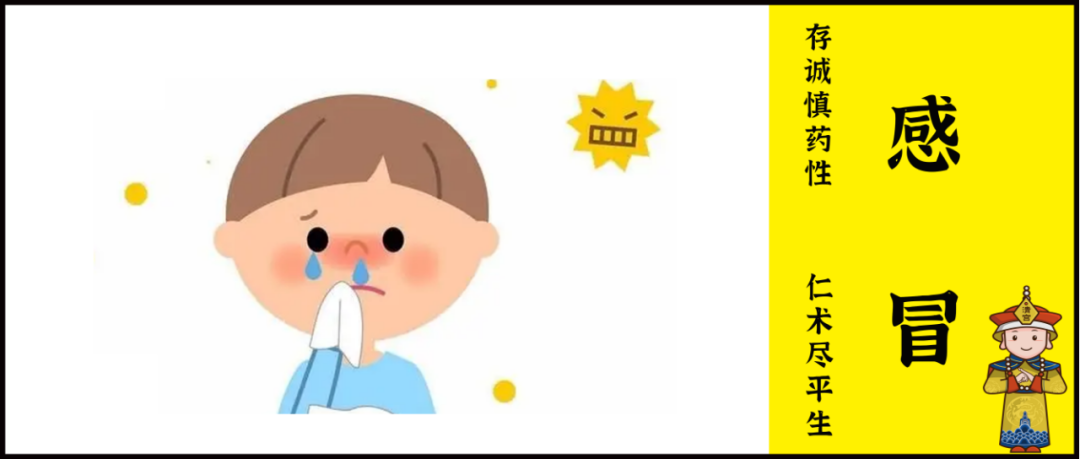
Colds are common external diseases that occur in all seasons, especially prevalent in winter and spring. Many families stock up on traditional Chinese medicine (TCM) for treating colds, yet some individuals find that their symptoms do not improve despite taking various medications. The key issue lies in the lack of differential diagnosis and appropriate medication.
In TCM, colds are generally classified into two main categories: Wind-Cold (Feng Han) and Wind-Heat (Feng Re). These two types of colds have significant differences in etiology, pathogenesis, symptoms, treatment principles, and medication.
Wind-Cold cold is caused by the invasion of Wind-Cold evil and the failure of lung qi to disperse. Symptoms may include: severe chills, mild fever, absence of sweating, headache, body aches, nasal congestion with clear discharge, cough with thin white phlegm, no thirst or preference for hot drinks, and a thin white tongue coating. The treatment principle should focus on expelling Wind and warming the exterior. Commonly used herbs include Ma Huang (Ephedra), Gan Cao (Licorice), Jing Jie (Schizonepeta), Fang Feng (Siler), and Su Ye (Perilla Leaf) for dispersing cold.
Wind-Heat cold is caused by the invasion of Wind-Heat evil and the disharmony of lung qi. Symptoms manifest as high fever, slight aversion to wind, headache, sweating, sore and swollen throat, cough with sticky or yellow phlegm, nasal congestion with yellow discharge, thirst with a preference for cold drinks, red tongue tip and edges, and a thin white tongue coating with slight yellow. The treatment principle should focus on expelling Wind and clearing Heat. Depending on the severity of symptoms, herbs such as Niu Huang Da Huang (Bovine Bile and Rhubarb), Zhi Zi (Gardenia), Huang Bai (Phellodendron), and Huang Qin (Scutellaria) are used for treatment.
How to distinguish between Wind-Heat and Wind-Cold colds?
Recently, I often hear friends say they have a cold and are drinking Ban Lan Gen (Isatis Root), antiviral oral liquids, Jin Yin Hua (Honeysuckle), or cooling tea. I usually advise my friends that they have not correctly distinguished between Wind-Cold and Wind-Heat colds.
Why do I say this? Recently, the weather in Guangdong has cooled down, and colds caused by exposure to cold are mostly Wind-Cold colds. This is due to being exposed to wind and cold. It usually occurs when one has not rested well, is physically weak, or is inadequately dressed while sweating and exposed to wind.
TCM classifies common colds into Wind-Cold and Wind-Heat colds. In fact, many friends cannot distinguish between Wind-Cold and Wind-Heat colds.
Wind-Cold colds are usually caused by fatigue, lack of rest, combined with exposure to wind or cold. Wind-Cold colds are more common in autumn and winter. Wind-Cold colds belong to the Tai Yang (Greater Yang) syndrome, where the Tai Yang channel is obstructed. Characteristic symptoms include:
* Severe pain in the back of the head, which also restricts neck movement.
* Aversion to cold and wind, usually requiring many layers of clothing or a heavy blanket to feel comfortable.
* Nasal discharge is clear, white, or slightly yellow. If nasal congestion occurs without discharge, drinking hot water may lead to clear nasal discharge, which also indicates Wind-Cold cold.
* Tongue without coating or with a thin white coating.
* If you can take the pulse, you should be able to feel a floating and tight pulse, indicating that Yang qi is on the surface, easily felt.
Wind-Heat colds are usually caused by constipation, often belonging to the Yang Ming (Bright Yang) syndrome. Typically, the sequence is this: after two days of constipation, a sore throat for one or two days, followed by cold symptoms, indicating Wind-Heat cold (which can also be due to external heat evil first attacking the lungs). Why does constipation lead to a cold? TCM believes that the lungs and large intestine are interrelated; if bowel movements are not smooth, the large intestine affects the lungs, leading to cold symptoms. Conversely, if Wind-Cold colds are not treated promptly or appropriately, they can lead to internal issues such as constipation or diarrhea; in fact, diarrhea after a Wind-Cold cold is considered a transformation syndrome in TCM, indicating that the disease has entered the interior, and one should not casually use anti-diarrheal medications.
Symptoms of Wind-Heat colds include:
* Sore throat, usually painful before cold symptoms appear, with phlegm that is typically yellow or black.
* Thick nasal discharge, usually yellow.
* Tongue coating may be slightly yellow or possibly white, with a generally red tongue body.
* Constipation.
* Fever, thirst, and irritability.
* The pulse is usually rapid or flooding, meaning the pulse is faster and stronger than normal.
Once the causes of Wind-Heat colds are clarified, treatment is straightforward; in most cases, it involves relieving constipation (along with clearing heat and detoxifying herbs, which usually yield quick results). There are many methods, such as drinking cooling tea or taking some heat-clearing and detoxifying herbs.
Finally, let me clarify a few concepts that friends may confuse.
* Viral colds do not equate to Wind-Heat colds; the term virus is a Western medical concept, while TCM focuses more on the human body. Therefore, some doctors incorrectly equate viral colds with Wind-Heat colds for treatment.
* Sore throat is not the key to distinguishing between Wind-Heat and Wind-Cold colds; Wind-Cold colds can also often lead to sore throats.
* Similarly, cough, runny nose, and high fever cannot be used to differentiate between these two types of colds.


